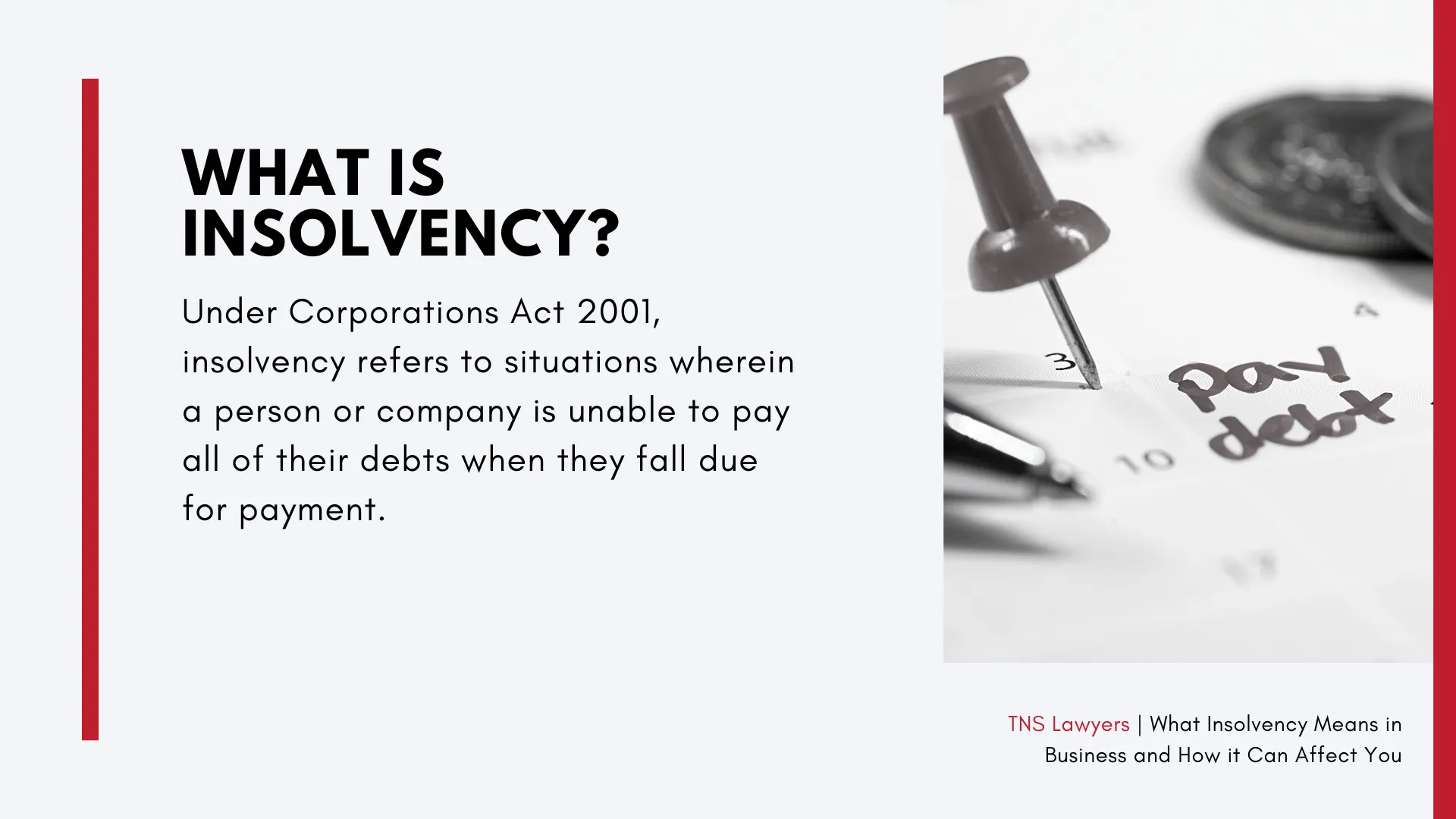What Does Insolvency Practitioner Mean?
The Basic Principles Of Insolvency Practitioner
Table of ContentsSome Ideas on Insolvency Practitioner You Need To KnowHow Insolvency Practitioner can Save You Time, Stress, and Money.The Definitive Guide for Insolvency PractitionerInsolvency Practitioner Fundamentals ExplainedThe smart Trick of Insolvency Practitioner That Nobody is Talking AboutGetting My Insolvency Practitioner To WorkInsolvency Practitioner Can Be Fun For Anyone
Insolvency is when responsibilities are higher than the value of the firm, or when a borrower can not pay the financial debts they owe. A firm can become financially troubled due to a variety of circumstances that bring about inadequate capital. When encountered with bankruptcy, a company or individual can call financial institutions directly and restructure debts to pay them off.
Business proprietors might speak to lenders directly and restructure debts into even more convenient installments. Creditors are commonly responsive to this method since they want to be settled and prevent losses, even if the repayment is on a delayed routine.
The owner creates a proposal describing just how the debt might be reorganized using cost decreases or various other prepare for assistance. The proposition reveals financial institutions just how the service may create adequate money circulation for successful procedures while paying its financial debts. Normally, a forgiven financial debt may be thought about revenue by the Irs (IRS).
Insolvency Practitioner Things To Know Before You Get This
When a company needs to pay raised costs for items and services, the business passes along the expense to the consumer. As opposed to pay the raised price, many customers take their business somewhere else so they can pay less for an item or solution. Shedding clients leads to losing income for paying the company's creditors.
When procedures stop, so does the company's revenue. Some business become bankrupt since their goods or solutions don't evolve to fit customers' altering demands.
The Ultimate Guide To Insolvency Practitioner
Expenses surpass profits and expenses continue to be unpaid. Types of bankruptcy include cash-flow bankruptcy and balance-sheet bankruptcy. Cash-flow bankruptcy occurs when a company has the properties to cover their debts yet they are in the wrong form, such as property as opposed to liquid funds. Balance-sheet insolvency, on the other hand, shows a lack of possessions in any kind to cover debts.
The internal revenue service states that a person is bankrupt when the overall responsibilities surpass total properties. Insolvency Practitioner. A insolvency, on the other hand, is a real court order that portrays how a financially troubled person or organization will repay their creditors, or just how they will offer their assets in order to click this site make the repayments
8 Simple Techniques For Insolvency Practitioner
When a business or person is bankrupt, they can not satisfy their financial commitments. Insolvency is not the exact same as bankruptcy, although a firm that has actually come to be insolvent might submit for insolvency. Bankruptcy is the state of not being able to pay your obligations while insolvency is a lawful process to discharge your financial obligations.
Understanding the aspects that click here to find out more can lead to insolvency, such as overspending, can aid you protect against insolvency and its repercussions.
The 4-Minute Rule for Insolvency Practitioner
It is popular that supervisors and police officers of firms (and supervisors of minimal obligation companies) owe fiduciary responsibilities to their organizations and their shareholders (or members). These fiduciary responsibilities are specified by state laws and, though there are variants from state to state, they usually consist of a task of loyalty and a task of treatment.
The task of care requires supervisors and police officers to work out diligence, to make informed choices, and to act in excellent confidence to ensure that their actions remain in the ideal interest of the company. Beyond the scope of this discussion, some states permit these tasks this to be restricted either by so noting in the organizational files or conforming with various other demands.
The Best Guide To Insolvency Practitioner

Be mindful concerning offering investors special treatment at the cost of lenders (e.g., accrediting and moneying a reward or a supply redemption). Take care about favoritism in between courses of investors. Clear up initiatives to find out all the realities before taking a certain program of action; directors should genuinely think that any choices made remain in the finest rate of interests of the corporation in its totality (i.e., decisions will be assessed in hindsight because of the effect of such activities on the firm).
In any type of insolvency or bankruptcy case, settlements made to specific creditors at the expenditure of various other creditors can be clawed back, specifically if there is some connection in between the business and the creditor. Take into consideration recommending at an annual investor meeting (or any kind of other conference of shareholders) a resolution attesting that all prior organization decisions and activities taken by the directors and officers of the firm were taken in excellent faith after a workout of practical treatment.
Insolvency Practitioner Can Be Fun For Everyone
Fully disclose any type of individual or business connections with events on the other side of deals including the company to stay clear of the look of a dispute of rate of interest. In reviewing possible fund raising transactions or a sale of assets of the struggling firm, know that these purchases may be inspected later on due to any kind of succeeding development of supervisors' fiduciary responsibilities to consist of financial institutions.